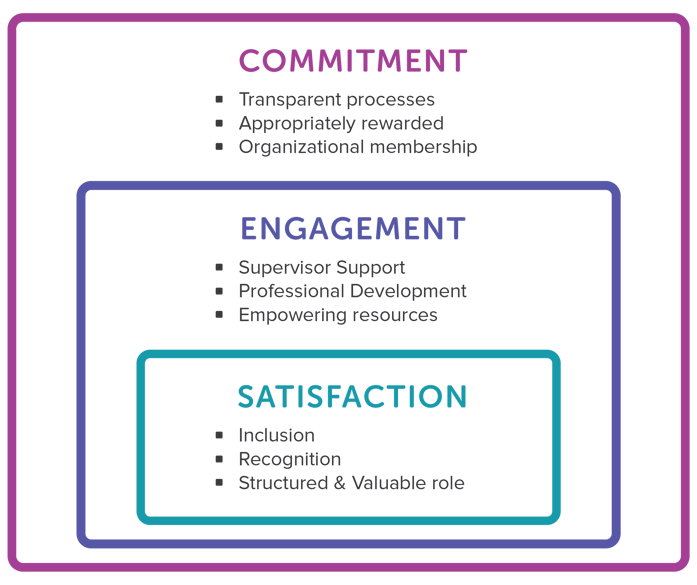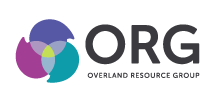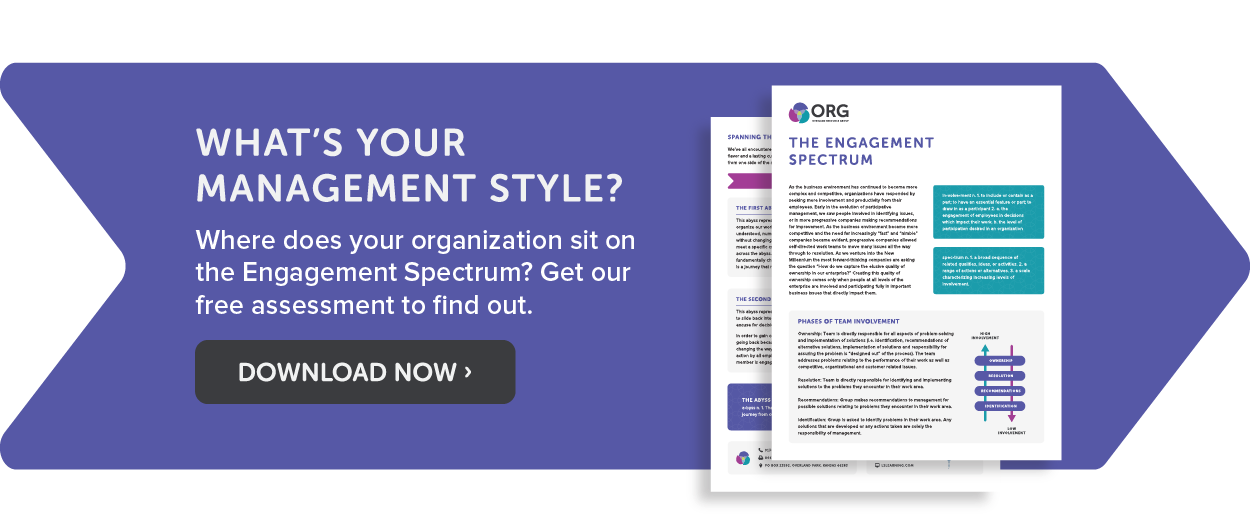
HOW DOES MANAGEMENT CREATE THE IDEAL WORKPLACE?
Anyone have eggs and bacon at breakfast this morning? When it comes to this protein-powered plate, the chicken is engaged…the pig is committed. And such is the case when it comes to enabling your workforce - engagement is only part of the story.
I find that many leaders speak of employee engagement as the end goal, but this can hinder the organization’s ability to create a fully engaged workforce.
ROLE OF LEADERSHIP IN EMPLOYEE ENGAGEMENT
Organizational leaders cannot approach employee engagement as a “hands off” exercise. Each leader is responsible for helping employees develop a clear understanding of their role and how it relates to the company’s success. Designating this responsibility to a department within the organization can limit the message’s effectiveness. Engagement becomes an agenda item, rather than an organic motivation. If you’re a business leader and you look back at your calendar, how much of your time is devoted to generating engaged and committed employees? Management doesn’t create engagement. Rather, it’s a current running through each email, each meeting, each workflow.
But how do you get to this ideal workplace? Or rather - how do you avoid getting bogged down in the fallacies that can hinder employee engagement?
Fallacy 1: Management creates engaged employees.
In fact, management is responsible for creating the environment that enables employees to become satisfied, engaged and ultimately committed to their work and the organization. This moves engagement past the one-size-fits-all template, and requires a nuanced approach.
It bears repeating, when leaders are devoted to engaging employees, they avoid the mistake of assuming employees are responsible for their own attitude. It becomes true WHEN management has created a work environment that invites employees to choose to become engaged.
A crucial component of an engaging environment is a continued cycle of feedback and refreshed engagement tactics. Leadership needs to develop strategies to implement mid-course corrections when an employee shows signs of disengaging. Better yet - methodologies to spur engagement without letting it wane.
Fallacy 2: Create a social office atmosphere and engagement will follow.
In practice, a social culture with corporate outings is best when implemented to augment and sustain engagement among employees. Hosting a happy hour does not equate to employee engagement.
These types of social events should be used to reward and recognize the identities of individuals within the workforce. Treating employees with respect and responding to their efforts boosts engagement.
Fallacy 3: Employees will become disengaged and/or feel oppressed if the company enforces high levels of accountability.
On the contrary, enforcing high standards is an effective way to stimulate employee buy-in. Articulating workforce expectations diligently and deliberately generates high levels of engagement, especially when related to tangible business successes.
When rules are understood, directly related to the operation of the business and applied fairly, you create an environment of understanding and stability. An engaged workforce appreciates firm precedents, established etiquette and recognized results.
ENGAGING IN THE IDEAL WORKPLACE
By avoiding the fallacies addressed above, employees will reach varying levels of engagement. These stages can be measured against the indicators below, with the goal of developing fully committed employees.

Employment Satisfaction - This first phase is recognized by distinctive, cumulative sets of activities that lead employees to identity with their job, their peers and their workgroup. Employees feel included, appreciated and recognized due to the significance of their job. Their contributions are respected and their roles well-structured. Evaluating levels of employee satisfaction helps your organization maneuver to the next phase: Engagement.
Employee Engagement - From the employee’s perspective, becoming engaged relies on inclusion in the team with shared values and clear goals. As your workforce moves to engagement, they develop a heightened sense of interaction and identity within their work. Trust and recognition from leaders empowers them to respond to constructive feedback with purpose and drive.
Employee Commitment - The difference between engaged and committed is nuanced but yields important results. The committed employee is all in. Support of the team and the organization comes naturally and persists over time. When engaged at this level, employees apply their energy in a goal-oriented manner, working efficiently to reach better business outcomes.
A committed workforce is clearly the goal, but all levels of engagement promote organizational success. Happier, more productive employees create satisfied customers and optimized business results. I encourage you to continue to find new ways to inspire commitment.


